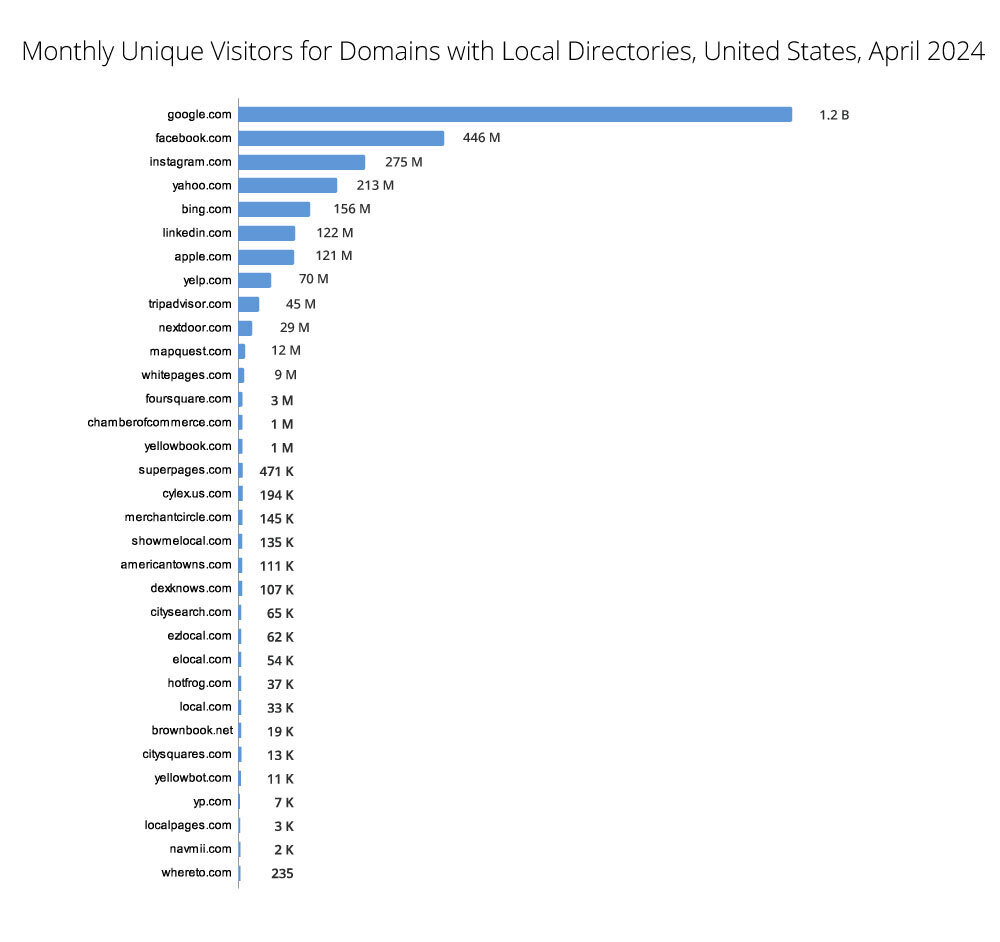Does Long-Tail Syndication Still Work?
Local SEO began as a discipline roughly 20 years ago, long before businesses could directly update their listings on Google. At the time, ranking well in local searches was achieved through a tactic called citation building, where the business would create or update its listings on a broad base of directory sites, many of which got significant consumer traffic back then.
But does long-tail syndication still work?
It’s Not 2015 Anymore: What’s Changed in Search
In the time since the discipline of local SEO was established, Google has progressively gained more and more market share for its own offerings, while simultaneously building out a much more sophisticated platform, now called Google Business Profiles, that accepts inputs directly from businesses. As to the value of long-tail directory sites today, all you have to ask yourself is this: when’s the last time you looked up directions to a business on Mapquest, or read a review on Citysearch or Superpages? Those sites simply don’t matter to consumers anymore, and it’s been our observation that they don’t make a difference for local SEO either.Quality Over Quantity: What Matters Now
Instead, Google Business Profile optimization — as well as optimization on some other key platforms consumers do use, like Apple Maps, Facebook, and Yelp to name a few — is the key to modern SEO at the local level. Still, many of us still remember a time when ranking well meant building out a ton of citations on dozens of directories. We wanted to know whether any of that work makes a measurable difference today.Our Syndication Study
That’s where our syndication study comes in. We looked at three multi-location brands who were not receiving any long-tail syndication; their local SEO strategy was focused, as we feel it should be, on top platforms only. We divided their locations equally into two randomized groups and added long-tail syndication to one group per brand. Then we waited. First, we checked to make sure listings were created or updated for the syndicated locations on multiple smaller directories, including YP.com, Merchant Circle, Yahoo, Mapquest, Citysearch, and several others. Next, we monitored Google rankings, impressions, and actions for five months. Would long-tail syndication make a difference to business performance — in other words, would it improve ranking, traffic, or conversions in a measurable way?The Result: Syndication Doesn’t Move the Needle
Local Ranking
In our analysis, we looked at the key metric where citations once had an important impact: local search ranking. The current consensus of local SEO professionals, according to the long-running industry survey Local Search Ranking Factors, is that citation building has a 7% influence on local ranking, down massively from prior years, with all other factors amounting to 93%. Would our data support this assumption? In fact, we found no measurable difference in local search ranking between locations syndicated to long-tail directories and non-syndicated locations. Below we show the average local rank change month-by-month across all keywords for the syndicated group and the non-syndicated group. Syndication began in the first week of January.Google Impressions and Actions
We also examined traffic to the Google Business Profiles in our study, as well as actions taken by consumers on those profiles, including clicks to call, clicks for directions, and clicks to the business website. For this part of the study, we focused on the growth trends for impressions and actions, comparing the syndicated group to the non-syndicated group. We aggregated impressions and actions data on a monthly basis, so the scope of this section extends to the end of April rather than May, but the results are consistent with those in our local ranking analysis. Likely because our test took place during the post-holiday period, we found that impressions trended downward for both groups of locations, until April when the non-syndicated group began trending upward. Actions were down for both groups in January-February but rose slightly between February and April. Overall, the growth trend for the non-syndicated group was more positive than that of the syndicated group.In summary, long-tail syndication was shown to have no measurable benefit in local ranking, local impressions, or local actions.
What Do Our Findings Mean for You?
Our findings take one worry off your plate, demonstrating that long-tail syndication is, at best, a nice-to-have, and certainly not a guarantee of improved local visibility. Though long-tail syndication may ensure accuracy across a broad base of sites, does this really matter when the sites in question get very little attention from consumers? To underline our point, let’s look at actual traffic to local directories — both today’s most popular platforms and several of yesterday’s citation sites.- Greg Gifford: “Citations don’t seem to matter at all anymore.”
- Brian Barwig: “Citations are still not doing anything to move the needle.”
- Noah Lerner: “I haven’t given citations much thought in the past two years.”
- Rasmus Himmelstrup: “It has been a downward trend for years but citations are not what they used to be. I spend a minimum of time on citations beyond the large players.”
- Brandon Schmidt: “The importance and impact of citations continue to dwindle.”
- Gyi Tsakalakis: “Stop wasting your time and money on citations.”









